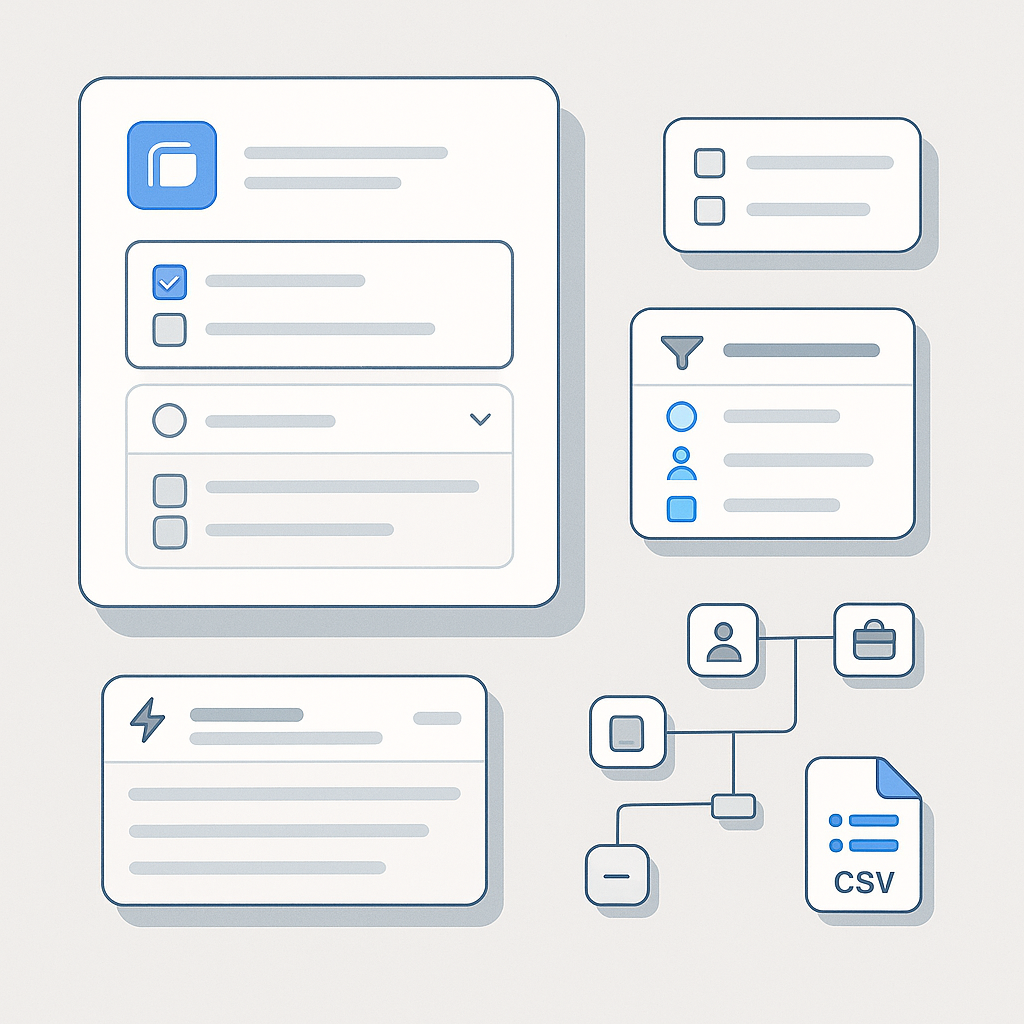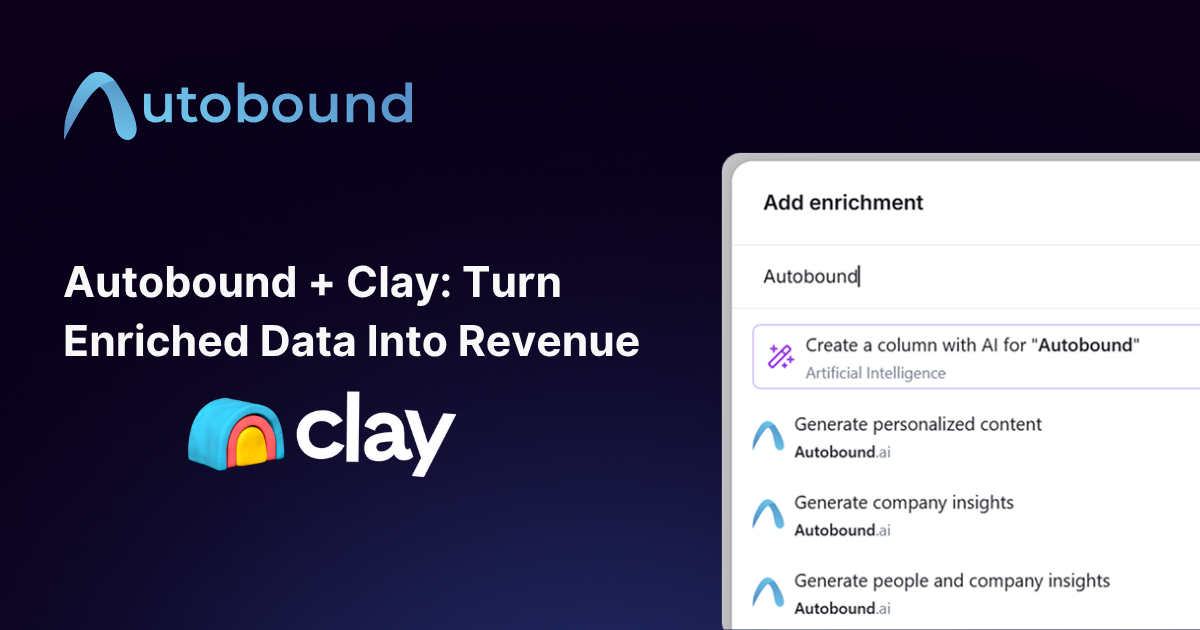Introduction: The Director of Infrastructure - Your Gateway to Enterprise IT
Let's be honest: nobody really thinks about IT infrastructure...until it fails. Then, it's all anyone can talk about. Suddenly, that creeping sense of dread sets in as emails bounce back, systems slow to a crawl, and the sales team's CRM grinds to a halt. It's a nightmare scenario for any business, and the weight of preventing such a catastrophe rests squarely on the shoulders of one often-unsung hero: the Director of Infrastructure.
These digital maestros are the architects and guardians of a company's technological kingdom. They're responsible for everything from ensuring network security and data storage to orchestrating seamless cloud migrations and navigating the ever-evolving landscape of software implementation. They make the big-budget decisions, often influencing millions of dollars in IT spending, making them key decision-makers for any B2B tech company looking to make a splash.
But getting your foot in the door with these tech-savvy leaders is like trying to sneak past a digital dragon guarding a treasure trove of opportunity. Their inboxes are overflowing with generic pitches, and they've developed an almost supernatural ability to sniff out anything that smacks of marketing jargon. And as if that wasn't enough, Directors of Infrastructure are facing down a monster of their own: mounting technical debt. Forrester predicts that by 2026, a staggering 75% of technology decision-makers will be grappling with moderate to severe levels of technical debt, adding fuel to an already blazing fire.
That's where this guide comes in. We're going deep into the trenches, equipping you with battle-tested strategies, proven email templates, and insider tips to help you break through the digital clutter, capture the attention of these elusive leaders, and ultimately, turn those conversations into closed deals.
Understanding the Director of Infrastructure’s Priorities and Pain Points
Step into Their Shoes: The World of an Infrastructure Leader
A Day in the Life (and Night) of a Director of Infrastructure
Imagine this: it's 3 AM, and your phone is buzzing with an urgent call from the CEO. The company's entire system is down, and nobody knows why. Welcome to the life of a Director of Infrastructure, where putting out fires (sometimes literally) is just another Tuesday. Their days are a relentless cycle of troubleshooting technical issues, negotiating contracts with vendors, planning for future growth, and constantly searching for ways to achieve more with tighter budgets. They're the silent guardians of the digital realm, working tirelessly behind the scenes to ensure that businesses run smoothly and efficiently.
Top Priorities
So, what keeps a Director of Infrastructure awake at night? What are their top priorities when it comes to keeping the digital ship afloat? Let's take a look:
- Reliability and Uptime: In the digital age, downtime is the enemy. Every minute of system outage translates to lost revenue and productivity. Keeping those systems humming along, 24/7, is priority number one.
- Security: With cyber threats lurking around every corner, protecting sensitive data is non-negotiable. Directors of Infrastructure are on the front lines of the cybersecurity battle, constantly shoring up defenses and implementing robust security measures.
- Scalability: As businesses grow and evolve, their IT infrastructure needs to keep pace. Directors of Infrastructure are tasked with ensuring that systems can handle increased workloads and adapt to changing business needs.
- Cost Optimization: Balancing performance with budget constraints is a delicate dance. Directors of Infrastructure are always on the lookout for ways to maximize efficiency and minimize costs without sacrificing performance or security.
- Staying Ahead of the Curve: The tech world moves at breakneck speed. Directors of Infrastructure need to stay ahead of the curve, constantly learning about emerging technologies and evolving security threats to ensure their companies remain competitive.
Common Pain Points
While their priorities provide a roadmap for what matters most, understanding their pain points is crucial for crafting messaging that truly resonates. Here's a glimpse into the challenges that keep them up at night:
- Technical Debt: Legacy systems and outdated infrastructure are the bane of their existence. They hinder innovation, increase security risks, and make it difficult to implement new technologies.
- Vendor Management: Juggling multiple vendors, contracts, and support agreements can feel like herding digital cats. It's a time-consuming and often frustrating aspect of their role.
- Talent Shortage: Finding and retaining skilled IT professionals is an ongoing battle. The demand for qualified professionals far outstrips the supply, making it difficult to build and maintain a high-performing team.
- Proving ROI: Demonstrating the business value of IT investments to leadership can be a tough sell. Directors of Infrastructure need to be able to clearly articulate the ROI of their initiatives to secure funding and support.
- Cybersecurity Threats: The ever-present threat of data breaches and downtime is a major source of stress. Directors of Infrastructure are constantly on guard, implementing security measures and educating their teams about best practices.
Crafting Compelling Messaging for Directors of Infrastructure
Speaking Their Language: How to Resonate With Infrastructure Experts
Connecting with Directors of Infrastructure isn't about becoming fluent in their technical jargon (though a little knowledge goes a long way). It's about demonstrating a genuine understanding of their world, their priorities, and the challenges they face daily.
- Focus on Business Outcomes, Not Features: Resist the urge to bombard them with a laundry list of your product's bells and whistles. Instead, connect the dots between your solution and their specific pain points. Explain how your product helps them achieve their top priorities and drives tangible business outcomes. For example, instead of saying, "Our software offers advanced automation features," try this: "Reduce manual tasks and free up your team to focus on strategic initiatives with our AI-powered automation platform."
- Quantify Your Value: In the world of IT infrastructure, numbers speak volumes. Use data and statistics to paint a clear picture of how your solution impacts their bottom line. Think along the lines of "Reduce IT downtime by 20%" or "Increase system scalability by 3x." These concrete figures will resonate far more than vague promises.
- Speak Their Language (But Don't Overdo It): Using industry-specific terms demonstrates your understanding, but nobody likes to be drowning in jargon. Strike a balance between demonstrating your knowledge and keeping things clear and concise. When explaining complex concepts, use analogies and real-world examples to make them relatable.
Jargon Buster
- Hyperconvergence: Imagine blending servers, storage, and networking into one delicious tech smoothie. That's hyperconvergence—a simplified, easy-to-manage solution.
- Edge Computing: Think of it as bringing the cloud closer to the action. Edge computing processes data closer to where it's generated, reducing latency and improving performance for time-sensitive applications.
- Social Proof Is Key: Directors of Infrastructure are a skeptical bunch. They're far more likely to trust the experiences of their peers than the promises of a salesperson. Highlight case studies, testimonials, and industry recognition to build credibility and demonstrate the real-world impact of your solution. For instance, you could say, "See how Company X, a leading manufacturing firm, reduced their IT infrastructure costs by 15% after implementing our solution."
- Address Their Risk Aversion: Let's face it: Directors of Infrastructure are not known for their love of risk. Acknowledge their concerns about security, reliability, and compatibility. Explain how your solution mitigates those risks and provides a smooth, seamless transition.
Effective Email Outreach Strategies for Directors of Infrastructure
Cut Through the Noise: Email Best Practices That Get Replies
In the digital jungle of a Director of Infrastructure's inbox, a generic email is about as effective as a whisper in a hurricane. To capture their attention and elicit a response, your email outreach needs to be laser-focused, highly relevant, and personalized to their specific needs.
- Subject Line Optimization: Your subject line is your digital handshake—your one shot to make a good first impression. Keep it concise, clear, and attention-grabbing. Focus on a specific benefit or pain point that directly aligns with their priorities. Here are a few examples:
- "[Company Name] - Reducing Your Technical Debt with [Solution]"
- "Struggling with [Pain Point]? [Solution] Can Help."
- "3 Ways to Improve IT Infrastructure Scalability - [Company Name]"
- Personalization is Non-Negotiable: We're not talking about simply swapping out their first name and calling it a day. Go deeper. Reference recent company news, industry trends, or shared connections to demonstrate that you've done your homework and you're not just blasting out generic emails. Consider using a tool like Autobound, which leverages a massive database of 250 million leads and integrates over 300 insight sources to automate deep personalization at scale.
- Keep It Concise and Actionable: Directors of Infrastructure are busy people. They don't have time to wade through paragraphs of fluff. Respect their time by getting to the point quickly and making your value proposition crystal clear. Include a clear call to action that guides them towards the next step. For example, you could ask, "Would you be open to a quick 15-minute call next week to discuss how [Solution] can help [Company Name] achieve [Desired Outcome]?"
- Don't Be Afraid to Follow Up: Persistence is key, but there's a fine line between following up and becoming a digital stalker. Craft thoughtful follow-up emails that provide additional value or address potential objections. Instead of a generic "Did you see my email?", offer a valuable tip or insight related to their industry or pain points.
- A/B Test Your Emails: What works for one Director of Infrastructure might not work for another. Experiment with different subject lines, messaging, and calls to action to find what resonates best with your target audience.
Proven Email Templates to Engage Directors of Infrastructure
Ready to Reach Out? Use These Templates as Your Starting Point
Template 1: The Technical Debt Reducer
Subject: Is Technical Debt Holding [Company Name] Back?
Body:
[Prospect Name],
I recently came across an article about [Company Name]'s impressive growth in [Industry]. Congratulations! As your company continues its upward trajectory, ensuring your IT infrastructure can keep pace is critical.
Many companies in your position find themselves struggling with the burden of technical debt, relying on outdated systems that hinder innovation and increase security risks.
[Solution] helps businesses like yours modernize their infrastructure and reduce reliance on legacy technology, freeing up resources and empowering innovation. Our platform enables you to:
- [Benefit 1 related to technical debt reduction]
- [Benefit 2 related to technical debt reduction]
- [Benefit 3 related to technical debt reduction]
Would you be open to a quick 15-minute call next week to discuss how [Solution] can help [Company Name] streamline its IT infrastructure and support its ambitious growth goals?
Best regards,
[Your Name]
Template 2: The Security-Focused Solution
Subject: Strengthening [Company Name]'s Cybersecurity Posture
Body:
[Prospect Name],
With cyber threats becoming increasingly sophisticated, ensuring the security of your IT infrastructure is no longer a luxury—it's a necessity.
[Solution] provides comprehensive cybersecurity solutions designed to protect your sensitive data, ensure compliance, and mitigate potential threats, giving you peace of mind in an increasingly uncertain digital landscape. Our platform offers:
- [Feature 1 related to security]
- [Feature 2 related to security]
- [Feature 3 related to security]
We understand that security is a top priority for Directors of Infrastructure like yourself. We've helped numerous companies in the [Industry] industry strengthen their cybersecurity posture and protect their valuable assets, and we're confident we can do the same for you.
Would you be interested in a brief call to discuss how [Solution] can help [Company Name] enhance its security measures and safeguard its future?
Sincerely,
[Your Name]
Template 3: The Scalability and Growth Enabler
Subject: Scaling IT Infrastructure for [Company Name]'s Next Stage of Growth
Body:
[Prospect Name],
Congratulations on [Company Name]'s recent product launch. It's inspiring to see your company achieving such impressive milestones!
As you continue on this exciting growth trajectory, ensuring your IT infrastructure can handle increased workloads and adapt to changing business needs is paramount.
[Solution] provides a scalable and flexible platform that seamlessly integrates with your existing systems, empowering you to:
- [Benefit 1 related to scalability]
- [Benefit 2 related to scalability]
- [Benefit 3 related to scalability]
We've helped numerous companies navigate the complexities of scaling their IT infrastructure, and we're confident we can do the same for [Company Name], ensuring your technology supports your ambitious vision.
Would you be available for a quick chat next week to explore how [Solution] can support your company's growth trajectory and help you achieve your goals?
Best regards,
[Your Name]
Beyond Email: Multi-Channel Strategies for Maximum Impact
While email is a powerful tool for reaching Directors of Infrastructure, it's most effective as part of a multi-channel strategy. By engaging with them across multiple touchpoints, you'll increase your visibility, build stronger relationships, and reinforce your message.
- LinkedIn: LinkedIn is the world's largest professional networking platform for a reason. It's a goldmine for connecting with Directors of Infrastructure, sharing relevant content, and engaging in industry conversations. Connect with them, share insightful articles, and participate in relevant groups to build relationships and establish your expertise.
- Content Marketing: Creating valuable resources, such as white papers, webinars, and blog posts, that address their pain points and provide actionable insights is a powerful way to demonstrate your thought leadership and attract their attention. By positioning yourself as a trusted advisor, you'll be top of mind when they're ready to explore solutions.
- Account-Based Marketing (ABM): For high-value accounts, consider implementing account-based marketing (ABM) strategies. This involves developing highly targeted campaigns tailored to the specific needs and challenges of each account. Understanding the nuances of ABM can significantly improve close rates, especially with larger deals.
- Events and Webinars: Attending industry events and hosting webinars on topics that resonate with Directors of Infrastructure provides opportunities to connect with them in person or virtually, showcase your expertise, and generate leads. These events offer valuable opportunities to network, build relationships, and position yourself as a thought leader.
- Partnerships: Collaborating with complementary technology vendors allows you to tap into their existing networks and reach a wider audience. By partnering with companies that offer solutions that complement your own, you can expand your reach and provide more comprehensive solutions to your clients.
Measuring Success: Key Metrics for Infrastructure-Focused Campaigns
What Gets Measured, Gets Managed (and Improved)
To gauge the effectiveness of your infrastructure-focused campaigns, it's essential to track key metrics that provide insights into your performance and areas for improvement. By monitoring these metrics, you can identify what's working, what's not, and make adjustments to optimize your approach.
- Email Metrics: Keep a close eye on open rates, click-through rates, response rates, and meeting booked rates to assess the effectiveness of your email outreach. These metrics provide valuable insights into how your emails are performing and whether your messaging is resonating with your target audience.
- Website Engagement: Track time on page, downloads of relevant content, and form submissions to understand which content pieces resonate most with your target audience. This data can help you refine your content strategy and create more engaging and valuable resources.
- Pipeline and Revenue: Ultimately, the success of your campaigns hinges on their impact on your bottom line. Track the number of opportunities generated and closed-won deals from infrastructure-focused campaigns to measure your ROI and demonstrate the value of your efforts.
Conclusion: Unlocking the Potential of the Infrastructure Market
Selling to Directors of Infrastructure can be challenging, but with the right approach, it's a lucrative market with significant growth potential. By understanding their priorities, pain points, and preferred communication channels, you can craft compelling messaging and outreach strategies that cut through the noise and drive results.
Remember to focus on business outcomes, quantify your value, leverage social proof, and personalize your outreach. By implementing the strategies and templates provided in this guide, you'll be well on your way to unlocking the potential of the infrastructure market and achieving your sales goals.
About Autobound
Autobound's leading AI-powered platform delivers 350+ unique insights for go-to-market teams from financial filings, social media activity, 35 news events, competitor trends, job changes and more. Trusted by 7,000+ companies including TechTarget and validated by 220+ 5-star G2 reviews, we're unlocking hyper-personalization at scale, with native integrations for Salesloft, Outreach, and more. Leverage our developer-friendly API, try our Chrome extension, try our platform free, or contact our team to eliminate guesswork and drive measurable growth →
Built with love in San Francisco, CA




